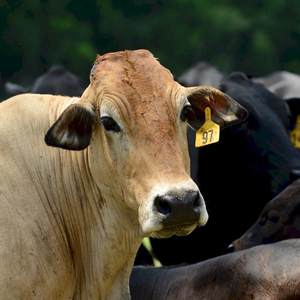Angus Cattle: Bulls and Cows’ Best Qualities
Blog | August 21st, 2016
In the United Kingdom, there are three distinct breeds of polled cattle; the Red Polled Norfolk and Suffolk breed that is found in England, the Galloway and the Aberdeen-Angus. Though, polled bulls and cows seemingly existed in Scotland before recorded history. Actually, prehistoric carvings of Aberdeen and Angus cattle have been found in many Scotland caves. As well, historians have found evidence of the hornless cattle in Siberia that date back a few centuries before the creation of the Angus petroglyphs. A hornless race of cattle was also illustrated in ancient Egypt by painters and sculptors. And as history portrays, Scottish breeds arose from the aboriginal cattle of the country. Today, the cattle breeds are indigenous to the districts from where they are found.
Aberdeen-Angus Breed
Bulls and cows of the Aberdeen-Angus breed are said to be superior to other breeds. This is because they are from purer stock. Although, little is known about the breeds’ early origin, it is believed that the perfection of the original stock started in the later years of the 18th century. Moreover, there are recordings of Aberdeen-Angus cattle dating back to 16th century and earlier.
Northern Scotland – bulls and cows were not of uniform color but had broken color patterns or varied color markings. Few cattle had horns but many were polled. Those that were polled were referred to as homyl, humlies and humble. Angus doddies or hornless cattle in Aberdeenshire and Angus, were also a familiar title for hornless cattle before the 1800s.
High regarded Characteristics
The Aberdeen-Angus breed have been so distinguished that even a herd book was created in 1862. In addition, the society was formed in 1879. By the mid-20th century, Angus cattle had become commonplace throughout the British Isles. However, the breed gained widespread recognition in the mid-18th century.
Qualities
Because of the Aberdeen-Angus native environment, the cattle are extremely hardy and can survive the typical harsh winters of Scotland. The cows generally weigh 1,210 lbs. (550 kilograms) and the bulls weigh 1,870 lbs. (850 kilograms).
Calves are frequently born smaller than the average market weight. So in order for veal production, crossbreeding with dairy cattle is necessary. Also, Aberdeen-Angus cows are naturally polled and are black in color. Moreover, compared to other breeds, the Angus matures much earlier.
Another strain of cattle is the Red Angus which emerged in the mid-20th century. In actuality, there is genetic difference between red and black Angus, aside from their colour genes. However, the breeds in the United States are different.
Angus cattle are also very muscular and are viewed as medium-sized. The leading use of Angus-Aberdeen cattle is for beef consumption and production. In fact, the beef is considered superior to other types of beef due to its marbling qualities. Indeed, the marbling qualities make is quite popular in many countries, even Japan and throughout the UK and Australia.
Aberdeen-Angus cattle are also used in crossbreeding in order to decrease the chance of dystocia (difficult calving). As well, crossbreeding the Angus is popular because of their dominant polled gene. Also, crossbreeding is used to create polled calves.
Optimized by NetwizardSEO.com.au
